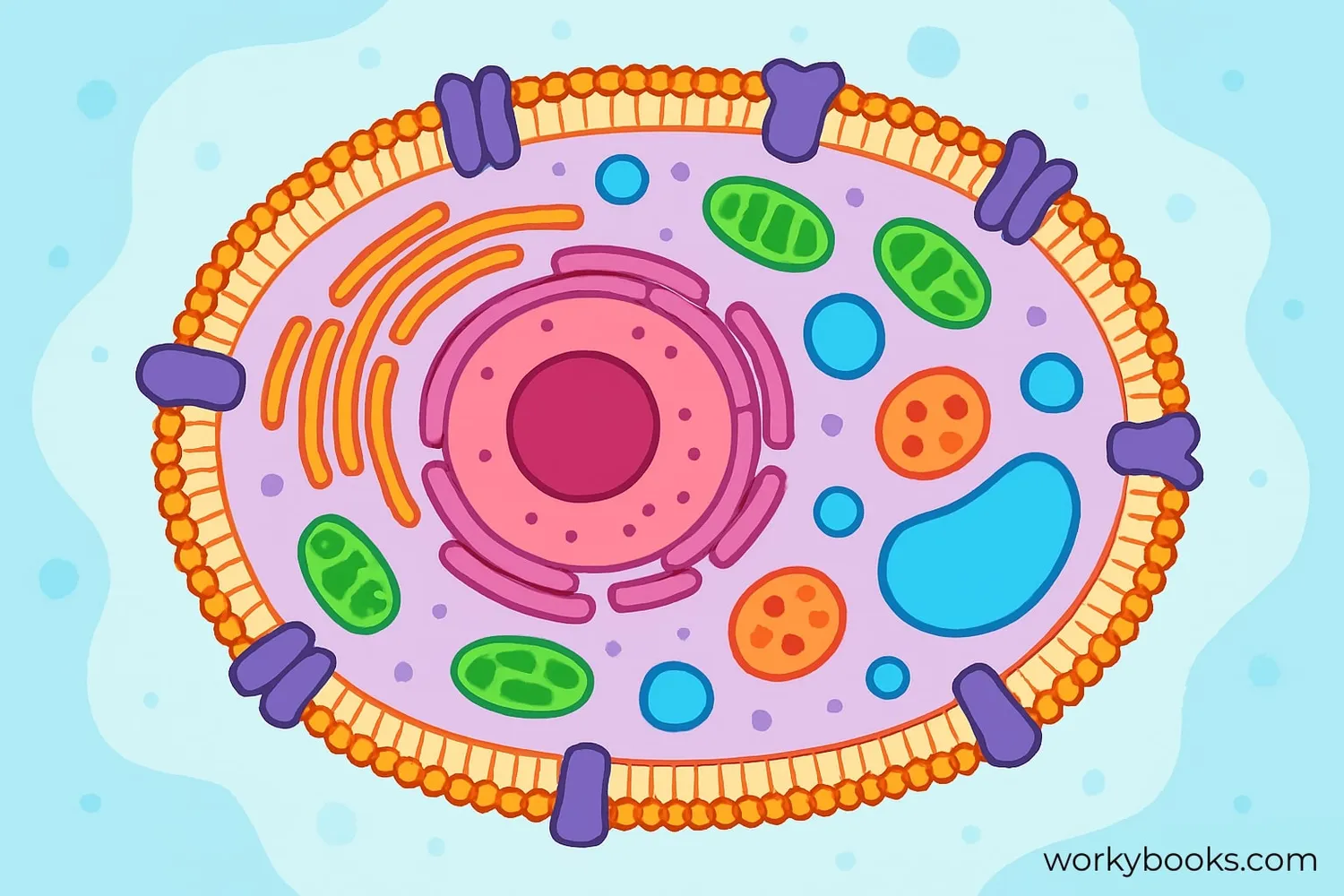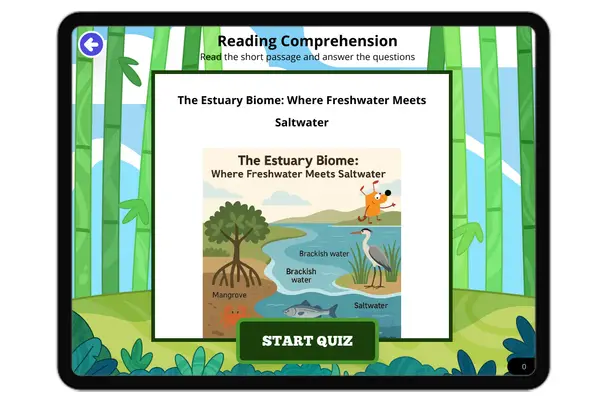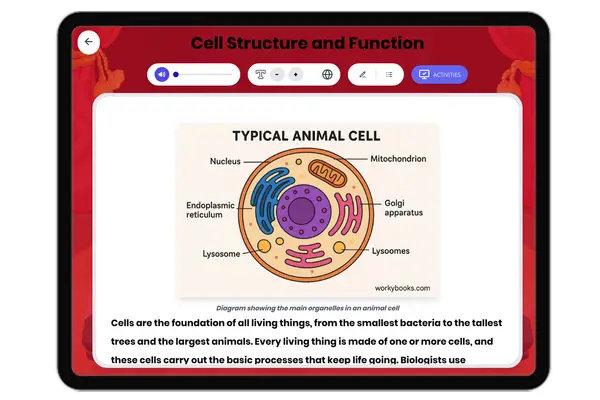Cell Membrane Transport — Reading Comprehension
Premium Resource
Grades
- 5
- 6
- 7
- 8
Standards
- MS-LS1-2
PRINT+DIGITAL RESOURCE
This learning resource is available in interactive and printable formats. The interactive worksheet can be played online and assigned to students. The Printable PDF version can be downloaded and printed for completion by hand.
About This Reader
This middle school science reading passage explores how cell membranes regulate the movement of substances in and out of cells, aligning with NGSS MS-LS1-2. Students will learn about passive transport (diffusion, osmosis, facilitated diffusion) and active transport (energy-requiring pumps) using real-world examples such as oxygen exchange and nutrient absorption. The passage emphasizes the importance of these mechanisms for maintaining homeostasis and supporting life processes, integrating scientific thinking about the evidence and discoveries behind these concepts. Glossary terms, a simplified version for accessible reading, Spanish translations, comprehension questions, graphic organizers, and writing prompts are included. Audio integration supports diverse learners. This resource is ideal for grades 6-8, supporting science literacy and critical thinking. Keywords: cell membrane, passive transport, active transport, diffusion, osmosis, biology, NGSS.
Perfect For:
👩🏫 Teachers
- • Reading comprehension practice
- • Auto-graded assessments
- • Literacy skill development
👨👩👧👦 Parents
- • Reading practice at home
- • Comprehension improvement
- • Educational reading time
🏠 Homeschoolers
- • Reading curriculum support
- • Independent reading practice
- • Progress monitoring
Reading Features:
📖
Reading Passage
Engaging fiction or nonfiction text
❓
Comprehension Quiz
Auto-graded questions
📊
Instant Feedback
Immediate results and scoring
📄
Printable Version
Download for offline reading
🔊
Read Aloud
Voice-over with word highlighting



















